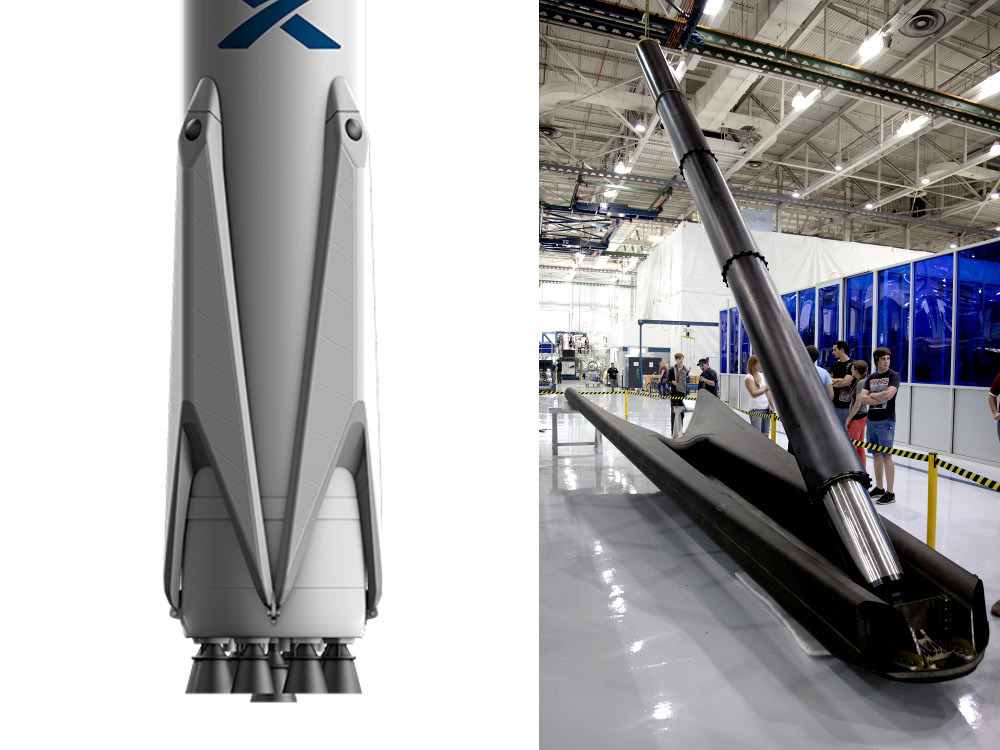Rocket SpaceX Falcon-9 will test folding support for a soft landing

The SpaceX Ilona Mask company continues to develop the technology of reusable launch vehicles with vertical landing, which will be able to independently sit down after launching the payload into orbit. Tests of a small (only “high” from a ten-storey building) experimental Grasshopper rocket are successful - “Grasshopper” has already demonstrated the ability to take off to an altitude of more than 700 meters and return exactly to the place of launch. Now begins a new stage of running technology. March 16 will launch a full-size rocket Falcon-9, which will be equipped with supports ("legs"), similar to those used for accurate landing Grasshopper.
Four “legs” made of carbon fiber and aluminum will be in the folded position during the start. Falcon-9 takes off like a normal rocket and splashes into the ocean - so far, SpaceX still does not count on a successful land landing. However, during the splashdown, the folding mechanism will be tested. Besides the fact that this is an important landing stage in itself, in the unfolded position the supports should slow down the possible rotation of the body. During the previous launch, when the possibility of restarting the first stage engines to slow down the fall and soft landing was tested, the engines could be restarted once, and the second restart did not work, as the rocket began to rotate and the centrifugal force prevented the fuel from getting into the engines.
Full-scale tests of systems for soft vertical landing of Falcon-9 missiles are conducted during regular commercial launches of Dragon trucks that deliver cargo to the ISS. The launch on March 16 will be the third of the twelve that SpaceX provides for a one and a half billion contract with NASA.
')
Source: https://habr.com/ru/post/213881/
All Articles